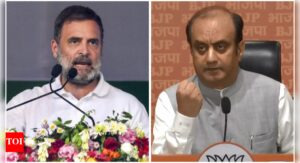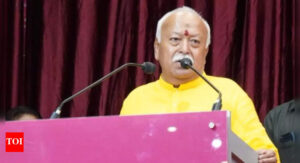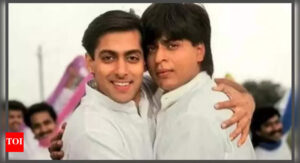Indian Historiography: New Approach to Literary History

Excerpts from the interview:Q. What was the genesis of the Sahitya Akademi-edited anthology Indian Literary Historiography? Could you tell us more about it?A. This book began a few years ago as a conference organised by the Sahitya Akademi. Not many people—perhaps no one—has addressed Indian literary historiography at book length. Historiography isn’t widely understood or practised in India, and many may wonder what it actually is. Simply put, it is a history of histories. At a more nuanced level, it’s the study of the methodologies used in writing histories. I found the subject fascinating, and I was in a position to persuade the Sahitya Akademi to organise a pan-Indian conference, with participation from many languages. This book is the outcome of that conference. I also tried to include languages not represented at the event, and so on.The subject interested me partly because I’ve been involved in writing a history of Indian literature myself—one that follows a somewhat different approach to most. In India, the pattern established by the Sahitya Akademi has been to give equal space to all recognised languages—14 at the time of the Constitution’s adoption, then 18, and now 22. The Akademi, in fact, recognises 24. So when they organise a conference or commission a volume, they expect most of these languages to be represented in separate chapters by subject experts. This model has been widely adopted and is now expected not just from the Sahitya Akademi but from other publishing institutions as well. That’s the approach I’ve followed here.Q. It is interesting to encounter these essays, as this area does not appear to have been explored with such a strong empirical focus before. Would this anthology be considered an important starting point in that direction?A. Yes, but also very enjoyable. One point worth making at the outset is that during British colonisation, many officials and scholars believed that Indians lacked a sense of history—be it political or literary. This notion began with John Stuart Mill, who wrote about this supposed deficiency. Later, Lord Macaulay claimed Indian history was unreliable, citing examples from the Puranas, such as kings ruling for 27,000 years and mythic elements like oceans of milk—concluding that such accounts were implausible.This view persisted for over a century. Even as late as 1900, the British Sanskrit scholar A.A. Macdonell remarked that Indians did not write history because they never made any—an insult and injury wrapped into one sentence, appearing in his lengthy history of Sanskrit literature. Yet even his work acknowledges the vast literary output in Sanskrit, which contradicts his own claim.These are colonial slanders, reflecting a sense of superiority. But the larger question remains: how do history and literature relate? Traditional historians have long insisted that history must be grounded in strict documentation—records, evidence, material data. Under such a lens, much of Indian tradition is excluded. These historians have often refused to treat literature as valid historical evidence.Happily, some of these once-dominant voices have begun to acknowledge that there can be more than one kind of history. Romila Thapar, a widely respected historian, now distinguishes between “embodied” history—clearly written as history—and “embedded” history—where historical content is hidden within literature. Texts such as plays, epics, even the Puranas, may not look like history but can yield rich historical insight depending on how they are read.Indian bilingual scholars like Vasudev Sharan Agarwal and Hazari Prasad Dwivedi also made important contributions. Agarwal, for example, drew on literary works like Kalidasa’s Meghaduta to construct a picture of India in Kalidasa’s time—not from a historical chronicle, but from a highly literary text. It depends on how one approaches the material. Reading for poetic ornamentation yields aesthetic pleasure, but reading from a different angle can also reveal historical depth.Western scholars—and some heavily Westernised Indian historians—took a long time to recognise this. But history is now seen as a broader, more complex field. Over the past few decades, it has also lost its exclusive claim to “truth.” The postmodern critique has blurred the boundary between history and literature. We now understand that no single version of history can claim absolute truth. Competing narratives arise based on perspective, interpretation, and motive.History is a narrative, and so is literature. That puts them on equal footing—and makes for a very exciting intellectual playing field. Q. As literature and history converge, how might this reshape our understanding of Indian literature? Does it point to a redefinition, a new canon, or simply a fresh lens on existing texts?A. Yes, the book offers a history of the histories of literature in various Indian languages. One innovation I introduced, departing from the usual Sahitya Akademi model, was to abandon the English alphabetical order typically used in such collections—where Assamese comes first, and Urdu last. Instead, since this is a book on historiography, I arranged the languages chronologically, beginning with the oldest.Of course, determining which language is “oldest” is not straightforward—it’s a politically charged question. Is Sanskrit older than Tamil? Is Urdu older than Hindi? Are Marathi and Gujarati contemporaneous? Still, I felt it was worth attempting a chronology based on historical evidence, which seemed more meaningful than alphabetical or script-based orders, such as the Devanagari order, which can also distort the narrative.These inherited structures—alphabetical or otherwise—are constructed paradigms that go unquestioned. I wanted to disrupt that a bit.While the model helped hold the nation together in the early years of its existence, it has drawbacks. In these collections, each language is treated in isolation, as though they developed independently. But Indian languages have a long history of interaction, influence, and exchange. The siloed structure fails to capture that interconnectivity. I couldn’t change the model, but I could take a different approach. After years of working with those volumes, I was given the opportunity to write the South Asia section of the History of World Literature (in four volumes). There, I broke from the language-by-language format, which, though tidy, doesn’t integrate. True integration would involve showing how languages flowed together across time, linked by chronology, genre evolution, and innovation.For instance, a literary innovation may arise in Urdu today and appear in Malayalam tomorrow—either through influence or independently. As Shishir Kumar Das noted, such patterns can reflect either prophane (early) or epiphane (later) appearances of similar phenomena across languages.This flowing model seemed a better way to capture the complexity of Indian literary history. Yes, the risks are real—we’ve grown used to seeing 15–20 pages per language, each in its own chapter, disconnected from the rest. As my friend Sujit Mukherjee said, such books are held together only by the binder’s glue; they lack a unifying vision.So I chose to write a literary history where all languages flow together. And if some readers count pages to compare Bengali with Tamil or Hindi with Kannada, so be it—I didn’t count. I followed the narrative and thematic criteria I set out, not quotas. Q. Having lived with this project for so long, what were the absolutely astonishing discoveries that you made? A. Yeah, I’ll come to that in a moment. But first, let me clarify one thing. The vision I just described isn’t in this book—it’s in The History of World Literature in four volumes. The history I wrote there, of South Asian literature, is something I’m trying to publish in India.Now, about this book—yes, the discoveries and excitements are enormous. I believe in engaging with contributors, reading drafts, offering feedback. Many are old friends—some of the country’s best scholars. It’s been a rich exchange of ideas. Some rewrote pieces several times, others cut them down. Let me highlight a few cases.In Sanskrit, early histories of Indian literature were written mostly by Westerners. In Hindi, it was Grierson; in other languages too, a Western scholar often compiled the first grammar, dictionary, and history—often before fully mastering the language. In Sanskrit’s case, from the Rigveda (1500–1200 BCE) to Jayadeva’s Gita Govinda (~1200 CE), the language held cultural dominance. When Western scholars encountered this, they were taken aback. William Jones, who translated Shakuntalam in 1789, called Kalidasa the “Shakespeare of India,” but also wondered why the play had seven acts and so much eroticism—things he didn’t associate with drama. This attitude led to the artificial categorisation of kavya versus sahitya, a division Indians themselves never made.In Tamil, there’s a long-standing competitive coexistence with Sanskrit. In Hindi, the late Avadhesh Kumar Singh listed 46 different literary histories. In Urdu, early histories were limited in scope—initially omitting non-Muslims and women, for instance. Each language has its own internal exclusions and silences, but some issues—like inclusion—cut across them all. That’s the real excitement of this volume.In my concluding chapter, I review 21st-century histories of Indian literature—five or six of them—and explain how I came to conceptualise a literary history that doesn’t go language by language, but follows a chronological flow, highlighting innovation wherever it occurred. There is an inherent imbalance in our linguistic landscape—Hindi is spoken by five times as many people as the next major language. I wish all languages were equally represented, but that’s not how things are. We must work with what we have and compensate accordingly, striving for a spirit of inclusiveness—though it will always be seen differently by different people. That’s part of the debate, and the fun.Yes, it’s been exciting to work on this volume since the 2016 conference. But I must stress again: the other project—in which I imagined myself (pardon the vain conceit) riding a chariot pulled by 24 horses, each one a language—is a different model. I lived with that for 18 years, from 2004 to 2022, as part of a Stockholm-based collegium.I’ve followed both models in my writing—one in Indian Literary Historiography, the other in the global history project. It goes beyond what most literary discussions do. Most are either criticism or reviews of a single text. Few explore long historical perspectives across multiple languages in one book.






